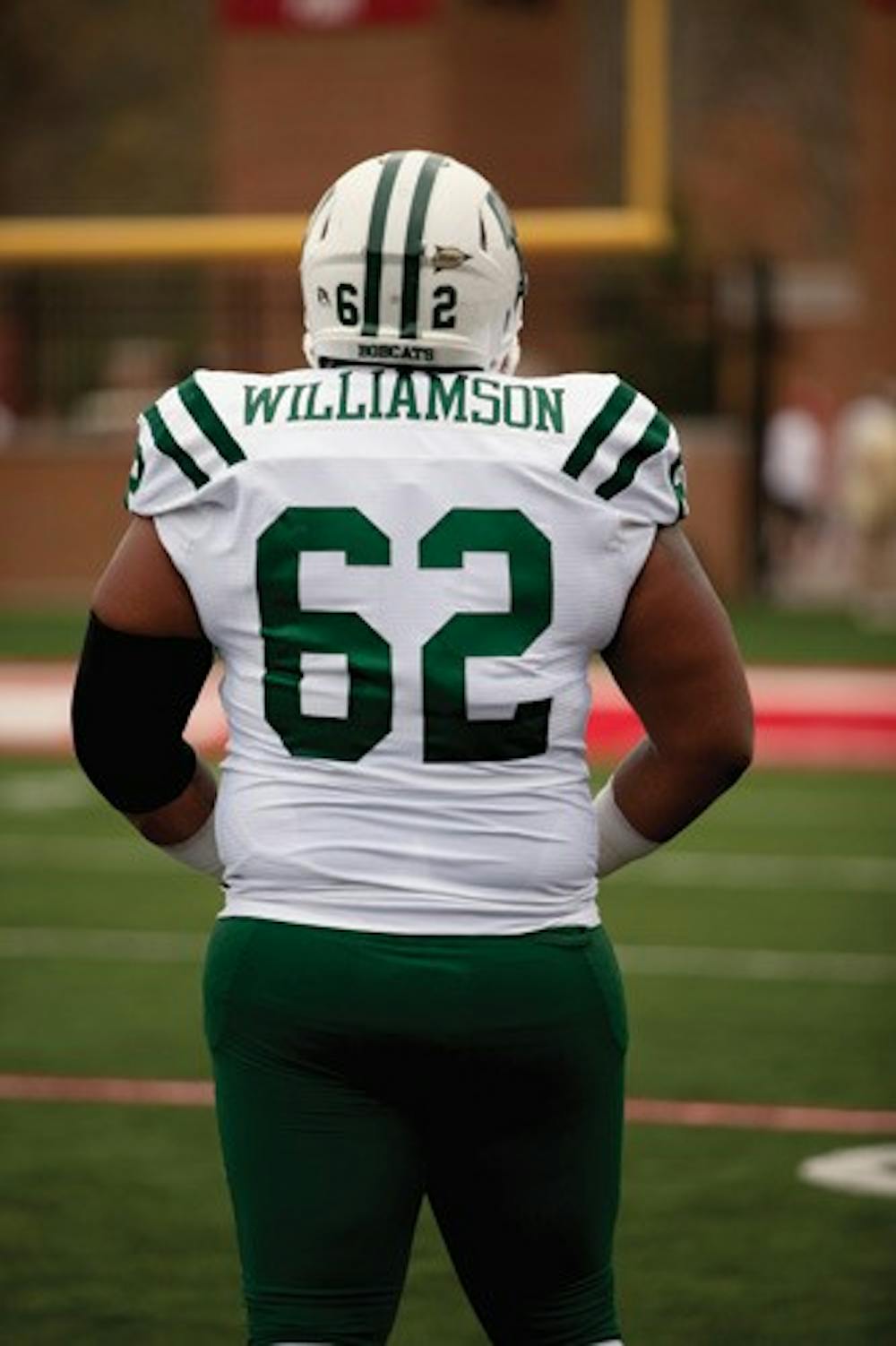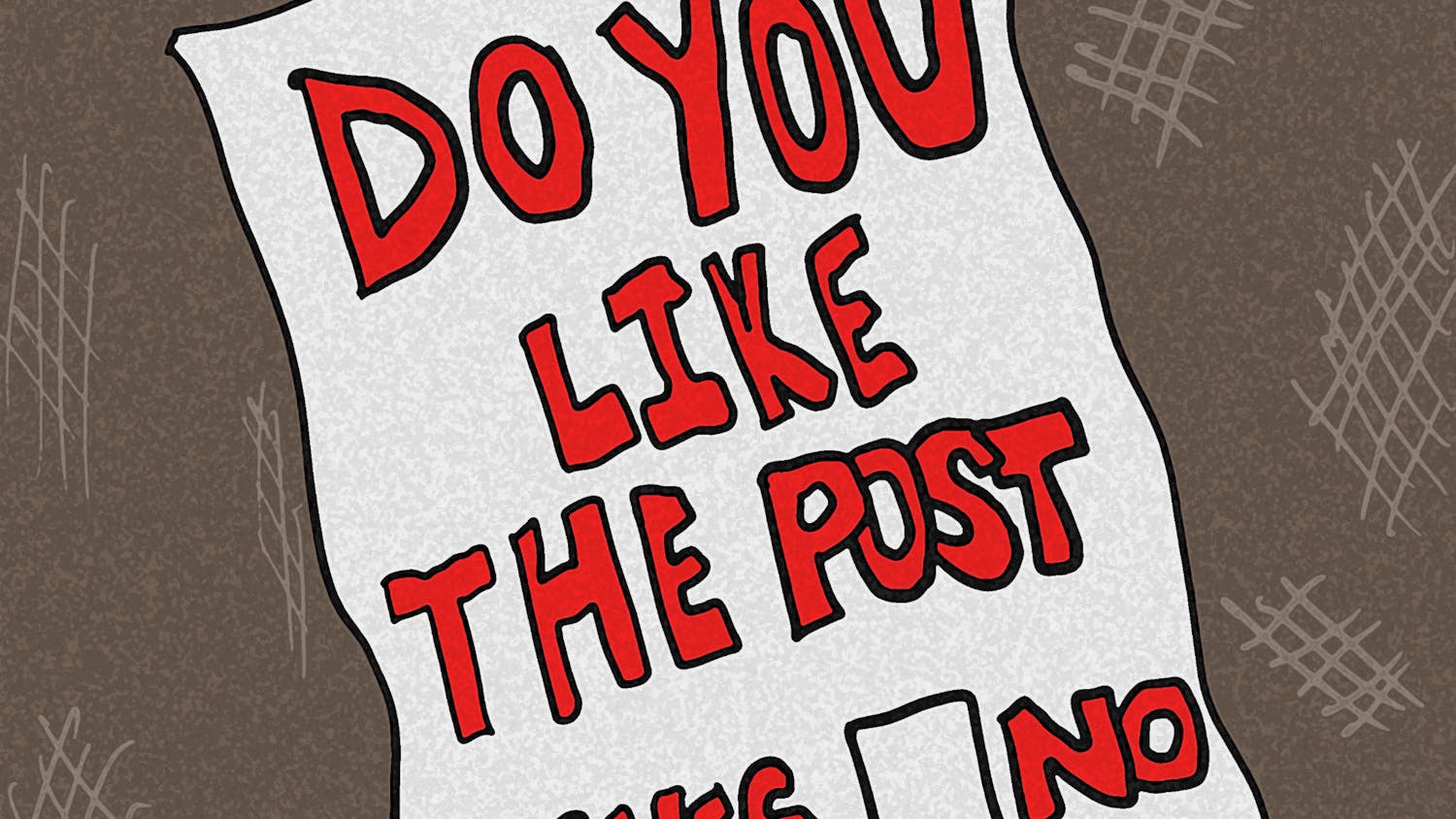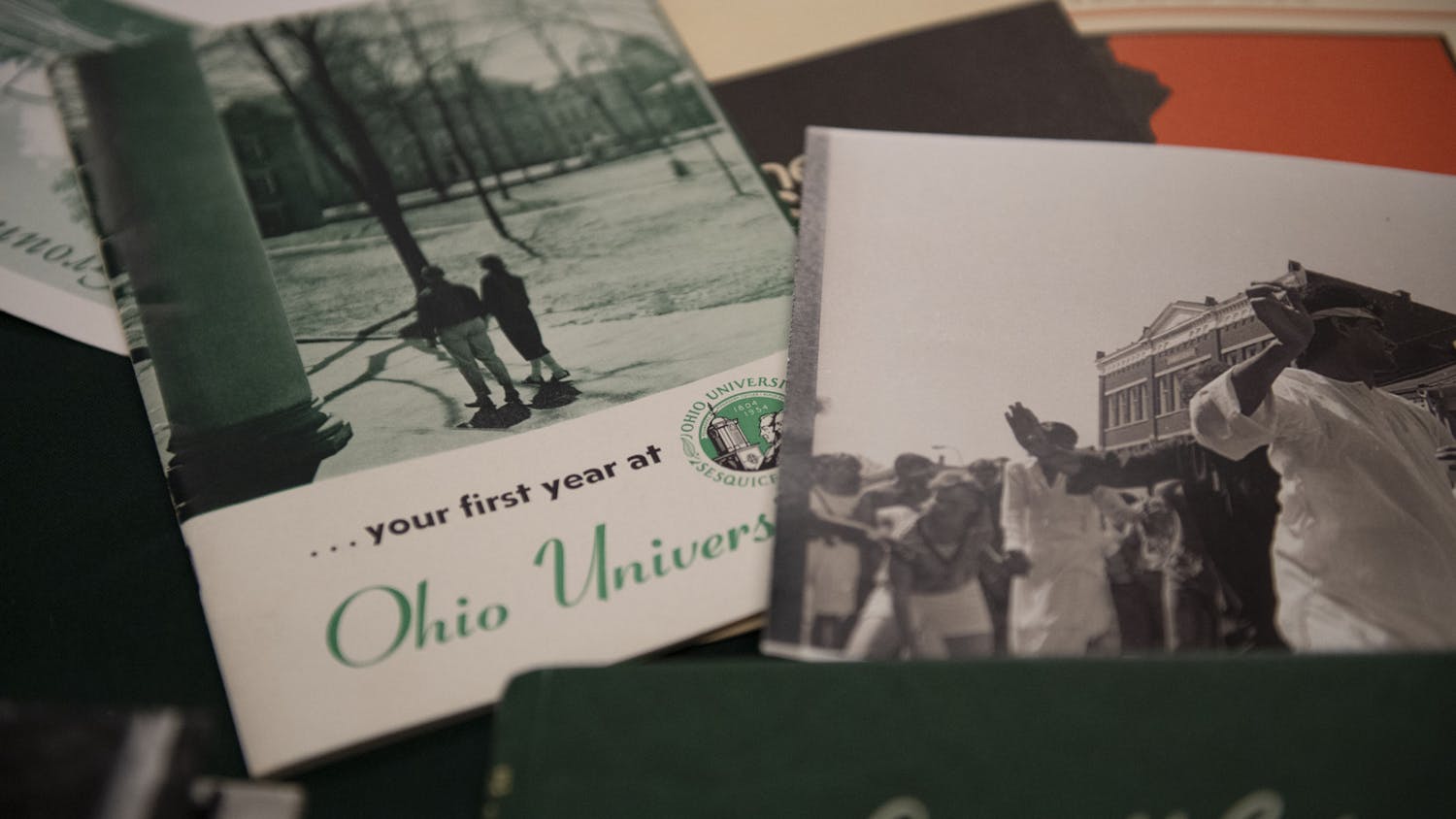Ohio ended its 2011 spring-practice season on a high note, ready to avenge its losses from the previous season. But soon, the Bobcat family suffered an unexpected loss that far surpassed any that came on the field.
Marcellis Williamson, Ohio’s larger-than-life nose guard whose size was matched only by his unifying sense of humor, died April 27, 2011, at Euclid Hospital from a blood clot in his lung. Williamson, 23, had been training for private workouts with teams from the Canadian Football League.
Word of his death spread across Facebook that night, leading Jason Grooms, Ohio’s director of football operations, to call Williamson’s cellphone. The voice on the other end of the line belonged not to Williamson but to his aunt, who delivered the tragic news.
Grooms then called head coach Frank Solich and notified the team’s captains that they had lost Williamson.
“I got a phone call from (senior captain) Jeff King, who had heard through the grape vine,” defensive lineman Neal Huynh said. “It was just a really big shock, such a tragedy that he was gone, but I know that he’s with us in spirit. It was just a surprise because he was so young and full of life.”
Williamson measured in at 6-foot-1 and a hefty 327 pounds. Defensive linemen might be larger than most other players on the turf, but mobility is as important as strength. Williamson boxed and did cardio workouts in addition to the team’s regular fitness regimen.
“He was a guy who came in, and you looked at his height and his weight, you thought he doesn’t have much, that he’s not going to make (the cut),” Solich said. “From the body build, he wasn’t going to change that too much. He worked incredibly hard to develop endurance to stay on the field and to stay hard.
“The players just saw that in him: that he was a guy that gave everything he had.”
Upon word of his death, the team started to give back.
Ohio Athletics set up the Marcellis Williamson Memorial Fund to help defray funeral costs. Through private donations, memorial T-shirt sales and a car wash put on by Ohio’s cheerleaders, the fund collected $9,576.54.
“It was instantly thought of to create a fund,” Grooms said. “We wanted to help the family and knowing their background that they may need the help.”
By the next day, a banner with Williamson’s No. 62 hung on the side of Peden Stadium. The Green & White Club sponsored a podium and plaque with Williamson’s likeness etched on it. The players touch the plaque on their way onto the field before every home game. Every helmet had a “6-Deuce” logo to remember Williamson by his nickname.
An Ohio defender wore Williamson’s jersey during every game leading up to the Famous Idaho Potato Bowl. During that game, Williamson served as an honorary captain, and his jersey shined as a beacon from Ohio’s sideline.
“A lot of the ideas came from the players themselves,” Solich said. “They really wanted to honor Marcellis, and they did not want it to be a short-lived honor.”
Williamson’s family attended Ohio’s game against Marshall on Sept. 17, during which the fallen player was honored. The Bobcats routed the Thundering Herd 44-7 while breaking in their new black jerseys.
Huynh, who was Williamson’s understudy and roomed with him on road trips, wore jersey No. 62 during the Marshall game and led his teammates onto the field.
“That was a really big honor for me personally because I knew his family was all there,” he said. “I really wanted to go out and play like Marcellis, to play as hard as I could play. He was all about style, so he really would have loved (the black jerseys).”
Since the Marshall game, Williamson’s family has not been in contact with the team. His parents could not be reached for comment, but his father, Brian Perkins, expressed his appreciation for the team’s support last spring.
“Ohio University has been a sensational source of support for our family at this time,” Perkins said a month after his son’s death. “Without them, I’m not sure how things would have gone.”
ms229908@ohiou.edu






